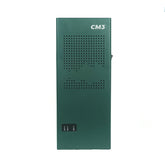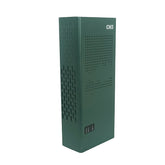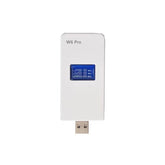The difference between GSM and CDMA networks
Mobile phones have become an indispensable tool in people's lives. GSM and CDMA are the two most basic network signals used by mobile phones. The full name of GSM is Global System of Mobile communication, after the French technical group "GrouPE Spécial Mobile". The first GSM specification was finalized in 1990. The content of this specification is over 6000 pages. GSM and CDMA networks are very popular information networks and it is easy to cover both signals by purchasing a GSM signal jammer.
GSM is a cellular network, which means that the mobile phone is connected to the nearest cell area on which it can search. The GSM network operates on a number of different radio frequencies. There are four different cell sizes in the GSM network: macrocells, microcells, pico cells and umbrella cells. Coverage varies by environment. Cell radius varies from less than 100 meters to tens of kilometers depending on antenna height, gain and propagation conditions. The longest GSM specification currently in use supports up to 35 kilometers. There is also the concept of extended cell, where the radius of the cell can be doubled or more. GSM also supports indoor coverage, and power from the outdoor antenna can be distributed to the indoor antenna distribution system through the power splitter. This is a typical configuration for high-density indoor calling needs, which is common in shopping malls and airports. However, this is not necessary as indoor coverage can also be achieved by wireless signals passing through the building, but it can improve signal quality and reduce interference and echoes.

The full name of CDMA is Code Division Multiple Access, which is a new and advanced wireless communication technology, developed on the digital technology sector - spread spectrum communication technology. The principle of CDMA technology is based on spread spectrum technology, which is to transmit certain information data over the signal bandwidth. It is modulated by a high-speed pseudo-random code whose bandwidth is much larger than the signal bandwidth, so the bandwidth of the original data signal is extended and then modulated by the carrier. Send it. The receiving end uses the same pseudo-random code and processes the received bandwidth signal. The wideband signal is replaced by the narrowband signal of the original information data, that is, the despreading, to realize the information communication, and is widely used in the American market.
More than 2 billion people in more than 200 countries and regions around the world use GSM phones. The ubiquity of the GSM standard makes it increasingly common for users to roam internationally after signing a "roaming agreement" between mobile operators. The biggest difference between GSM and its previous standards is that its signaling and voice channels are digital. GSM is therefore considered a second generation (2G) mobile phone system. This shows that digital communication has been integrated into the system from an early age. GSM is an open standard currently being developed by 3GPP.













